
Non Volatile Technologies Pty Ltd
BALLINA AUSTRALIA 2478 (ABN 69 105 479 954) Ph:+61 2 9016 4695
"Helping others to have a future assures our own."
- Home
Project Nicaea

Non Volatile Technologies Pty Ltd
BALLINA AUSTRALIA 2478 (ABN 69 105 479 954) Ph:+61 2 9016 4695
"Helping others to have a future assures our own."
Project Nicaea
|
PROJECT NICAEA - ACHIEVING SOCIETAL ADVANCEMENT 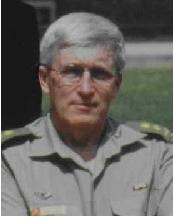
LTCOL Kevin Loughrey The Link between Poverty and Large Family Size 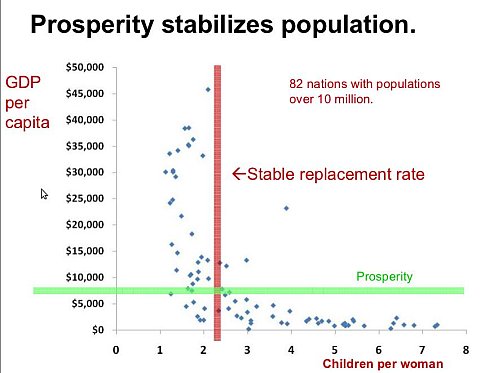
Greater Prosperity = Smaller Families. Executive Summary Every year, the Australian Government wastes in excess of $400 million buying software it could otherwise have for free. This comes about as a result of policies based on poor advice coming from public servants and consultants, many of them hired from the world's largest consultancy firms. If you would like to learn more about this, then click here. If you would like to further delve into the reasons for this failure of Governments, past and present, then click here.The free software I refer to is called Open Source Software. The papers mentioned above provide a good view of the value of this phenomenum and offer some insight as to why, despite it being so obvious a choice, Governments continue to fail to fully harness its potential. Open Source Software, coupled with cost affordable hardware and the Internet, has the capacity to profoundly and beneficially change societies around the world. If you don't know precisely what Open Source Software is, then click on http://www.libreoffice.org/ to see an impressive example of OSS. Libre Office is a fully featured Office Suite that is Microsoft Office compatible and in many ways is technologically superior to Microsoft Office. It runs on many different operating systems (including MS Windows!). Open Source Software, coupled with cost affordable hardware and the Internet makes possible unfettered access to information and education without discrimination. The combination of these technologies has the ability to raise the status of women in developing countries and, by doing that, will reduce the incidence of extremism, conflicts and a population growth that cannot be indefinitely sustained by this world's ecosystem. In recent years there has been considerable public attention drawn to the matter of climate change. There are those who are passionate believers, those who are ambivalent and those who don't believe it is happening. With respect to the matter of Open Source Software, regardless of one's opinion on the climate-change debate most would agree that if there were far fewer people on this planet, pollution would not be as much a problem as it is today and is going to be in the future. I'm not suggesting for a moment forced reduction of total fertility rates by dictate. Instead, I believe it will happen naturally (and comparatively quickly) if we make a determined effort to raise the status of women in all developing countries by providing everyone with unfettered access to information, education and commercial opportunities. Open Source Software combined with the global connectivity of the Internet can play a significant role in achieving this ideal. If you are sceptical of this, then I suggest you look at the transformation that has occurred in the Indian province of Kerala . Any modern business is dependent on computer technology for its competitiveness and its profitability. It is not sensible, nor would it be efficient for the first world to be using one lot of computing technology and for the developing world to be using another. The Internet is an excellent example of how, for it to work properly, it is necessary everyone conform to the same standards. Open Source Software(OSS) is a means by which there can be a sharing of knowledge, conformance to standards that ensure interoperability, and the provision of cost-affordable computing technology to developing nations. Add to that affordable hardware (even second-hand hardware), electric power and the Internet and you have all the necessary ingredients for any society to rapidly advance to the state where it can help itself. The world has seen the spreading of democracy, in fits and starts, throughout the Middle East. To a large extent this has been driven by the ability of people to learn about life in other countries by way of the Internet and modern communications technology. Through this medium they have become informed, educated and desirous of a life free from intolerance and dictatorial state control. Much of this technology has been driven by Open Source Software. My hope is that, in some small way, I might help accelerate this process. The following is a longish story about my life's mission to make a positive difference to the world in which we live. (The buttons down the left-hand-side allow you to quickly navigate to any part of this paper.) This journey has involved people and places as diverse as Rupert Murdoch, Ted Turner, the Bush Administration, the World Bank, the Australian Government and, latterly, the Australian Department of Defence. It started in earnest in 1997 when I quit my well-paid job as Group General Manager of a publicly-listed, multi-national company and it continues to this day. I've provided this story in the hope some might find it interesting, be recruited to this cause and might be more effective in their own efforts in the future by learning from my experiences. |
|
Introduction This story has its genesis in a 1985 Office of National Assessments(ONA) paper pointing to human over-population as a catalyst for:
What is Open Source Software (OSS) and what is its relevance? Computer software applications start out life as "Source Code". Source code is "human readable" (though some of it is pretty much unintelligible to untrained people!). In the world of OSS, the majority of programs are covered by what is called the "GPL", standing for GNU General Public License. Under this licence software is provided free of licence fees to any user and all users have access, if they wish, to the source code of the program. Users may alter the source code but if they distribute the program, they too, must make their source code freely available to all recipients of that distribution. It is imperative under these arrangements that acknowledgement is given to all persons who wrote any of the code. In that way, the provenance of OSS is always known. Many people have difficulty in understanding how such a model could be in any way commercial. The easiest way of explaining this is that, under the GPL, people sell their services, not a software product. It is actually a very sustainable commercial model; far superior to that of selling a product that could quickly be displaced by another supplier or manufacturer. From a consumer point of view, OSS offers a superior solution, not only because it is free of licence fees, but because it is possible to modify the software such that it exactly satisfies requirements or represents that person's management style. For developing countries, it puts the latest technology within the reach of their populations. Better still, their young not only learn how to use a computer but how a computer and its associated software actually works! OSS today is huge. It involves many tens, if not hundreds, of thousands of talented programmers around the world sponsored by huge companies like IBM, Google, Oracle and Hewlett-Packard to name a few. Some prominent examples of OSS can be found at:
Early Career So how did I get involved in this?I graduated from the Royal Military College, Duntroon in 1972 with an honours degree in Mechanical Engineering. It was during that time I had my first exposure to computers, programming in FORTRAN IV using punched cards! Over a period of 23 years, I served in a number of field, workshop and staff appointments. I also served for 4 years as an exchange officer with the British Army. As the years passed, I had the occasional brush with computers but it wasn't until 1979 that I once again had to become immersed in programming. In that year, I took over a workshop that had recently had two of its three clerks removed from its establishment. The one remaining clerk was not coping with the workload so I decided to write an accounting system for keeping track of the expenditure of funds being spent on contract repair. The program I wrote not only kept a simple ledger but also plotted a graph, on a line-printer, showing the amounts of money that had been committed by way of contracts and the amount that had been paid up to any particular time. The success of this program caused me to come to the attention of the head of RAEME, BRIG Faulks, and so, in 1980, I was posted into a position responsible for the design and development of computerised maintenance systems. In 1980/81 I conceived, specified and commenced implementation of the Army's computerised maintenance management systems; EMEDATER, which stood for Electrical and Mechanical Engineering Data on Equipment Repair, and EMEMic, which stood for Electrical and Mechanical Engineering Microprocessor-based system. My next "brush" with computers was when I was the Commanding Officer of a Base Workshop. I needed to determine the ratio of productive to non-productive time for my tradesmen and the mini-computer system in the workshop (called "MAWD") at that time could not give me the answers I needed and certainly not in a graphical format. So, using a AMSTRAD PC512 and Turbo Pascal, I wrote a program that would allow me to control the workshop's mini-computer and get the information I needed with zero clerical effort on the part of my staff. During 1988/89, whilst in charge of production in a very large British Army Workshop, I continued the work I had started at 1 Base Workshop and developed a suite of novel systems, running on 20MHz 286 PCs, and written in Turbo Pascal; for the purposes of bar coding tray stores and managing the calibration of technical equipment. These systems were subsequently introduced throughout the whole of the British Ministry of Defence. Many people think of me as being a "Computer-whiz" and try to pigeon-hole me in that role. In reality, I've been a Chartered Professional Engineer (and that, in itself, would take pages to describe) for most of my adult life. I like to invent and create things and make things work better. I've been successful running large organisations and small businesses and I've helped small to medium sized businesses to be successful. Computers are just one of many (effective) tools I use to achieve my objectives. If you look at the section of past and current projects, you will see that my interests and inventions are wide-ranging; from rifles, to physiotherapy tables, to silicon chips to massive pieces of mining equipment weighing many, many tonnes. During my life I have been granted a number of patents and have behind me quite a number of engineering world-firsts. |
|
Bombay-An example of how technology could profoundly assist hundreds of millions of people living in some of the world's largest cities. 
With the approval of the Municipality of Bombay, I tried to interest the Australian Government in spending $20 million in tied-aid, introducing Australian-developed technology which processed domestic garbage; extracting from it all recyclable materials and burning the rest in a high temperature incineration process after mixing it with clay. The end result of this was the total disintegration of all toxic chemicals, the generation of electric power and the production of a porous vitreous material that had a density around 1/3rd that of basalt but with an equivalent compressive strength. This made it ideal for the construction of dwellings because a large proportion of the strength of a building is expended supporting its own weight. With walls two thirds lighter than those built using conventional gravel, it is possible to have much thinner structures and so not use as much material; particularly cement. Not only does this result in more houses being constructed from the same amount of materials but also minimises the significant environmental impact caused by the manufacture of cement products. I was unsuccessful in my bid to have the Australian Government support this venture but the experience convinced me I could better follow my passion for helping people outside the Army than from within. As you will see later in this missive, the world is full of unusual twists. In 2005, I was recalled into full-time military service because of a shortage of senior officers with my qualifications. I served until 2012, running in the latter years a small cell involved in developing systems focussed on supporting operations and in promoting the use of Open Source Software. Middle East-a glimpse of what was coming. After a brief stint in mining, and an SES2 appointment in the Civil Aviation Authority, I found myself in charge of technology development for a multi-national company listed on the ASX. I spent a lot of time travelling the world; sometimes to the most interesting of places. One of these was the Middle East as a civilian advisor to the military and it was there that I was confronted again by what I saw. This compelled me to give some thought as to how I might make a difference for the better.Office of National Assessments Paper-prediction based in science and reinforced by David Attenborough's later work in this field. Back in 1985, I was a staff officer working in Operations Branch of Army HQ, responsible for developing papers related to combat development for the Army. In this appointment, I played a pivotal role in taking the helicopters off the RAAF and putting them into the Army. (In 1990, I attended Joint Services Staff College with Angus Houston - who later went on to become the Chief of the Defence Force - not bad for someone whose only real qualificatioin was flying helicopters! Just prior to coming to JSSC, Angus was intimately involved in the relocation of a large component of the RAAF's helicopter fleet from RAAF Base Amberley to the newly developed Army Aviation installation at Townsville! Later when I rejoined the Army and sent some papers related to computing in Defence to Angus, he never bothered to contact me... funny about that!! I actually now question the need for a Royal Australian Airforce at all. Instead, it would seem more sensible to have aviation resources dedicated to the Army and the Navy and dispense with the huge cost of a separate and specialised Airforce "Service".)Whilst I was involved in Combat Development, I read a paper produced by the recently-formed Office of National Assessments. Contributing to this paper were scientists from the Defence Science and Technology Organisation(DSTO) and the Commonwealth Scientific and Industrial Research Organisation(CSIRO). The paper analysed long range future strategic threats to Australia and concluded that the world as we knew it would end in 50 to 75 years time; largely because our ecosystem and the world's resources could not cope with the coming scourge of human over-population. Everything I remember of that paper is coming true. When I was at JSSC, we had a senior officer from Strategic and International Policy Division come and lecture the class on how certain countries in this world would always be economic basket cases (his words). Fortunately some of his predictions have proven to be wrong but, conversely, and regrettably, many were, to this day, correct! |
|
Addressing the Issue of Overpopulation 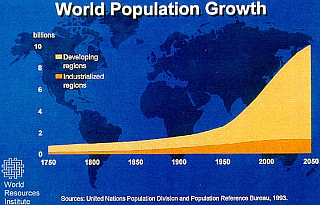
World Population - 9 billion by 2050? Haves and Have-Nots 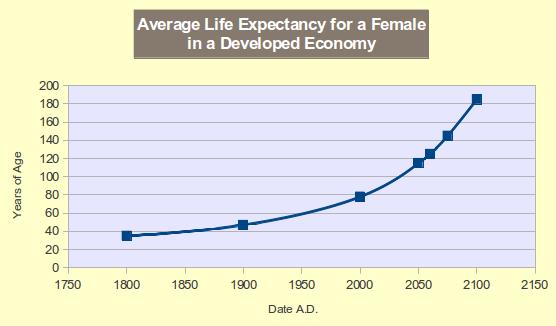
Life Expectancy- 118yrs by 2050, 180+yrs by 2100? For those that still remain unconvinced, consider the fact that nearly everything, from clothes, to shoes, to china to kitchen-cupboards to motor cars can now be made by robots. Manual workers in modern factories, even in the store-rooms are now a rarity. Developing countries that have their economies based on people-intensive manufacturing rather than on service provision are due for a rough time in the years to come. There is no doubt that, because of the improvements in manufacturing productivity that automation delivers, future societies will be able to comfortably cope with aging populations. Open Source Software and the Internet-possible "Game-Changers". By 1997, I had come to the same conclusion as the ONA paper. I could see the possibility that we humans were destroying the habitat we so much depend upon. At that time I became aware of the Open Source Software (OSS) movement. A movement where people shared their source code for the benefit of all and sold their services rather than their software products. I have always regarded technology as being the means by which we can multiply the effectiveness of our efforts in any area of human endeavour, physical or temporal. I could not only see the possibilities for OSS to make a difference, I also saw how it, combined with the power of Internet, could be a "game changer"; something the ONA paper could never have predicted.A Perfect PC-refining and testing the idea. So, with a bit of a nudge from some Malaysian businessmen, I quit my well-paid job in 1997 and, after some diversions, devoted myself to investigating the usefulness of OSS and, where the results were positive, promoting its uptake as a means of accelerating societal advancement. As a part of this, I formed a company called A Perfect PC" (APPC). Over a period of 7 years, it grew from nothing to over 250 customers. A Perfect PC gave me the opportunity to verify, with absolute certainty, the utility, practicality and safety of OSS and to develop concepts I had nurtured since 1980 relating to the writing of software and databases. My small team of "geeks" (and, to the ill-informed, "social misfits") installed over 30 Linux servers into customer sites. During that time, I wrote and successfully sold software that used wherever practical Open Source databases engines. Sites using the Open Source operating system, Linux, when compared to those sites that, for various reasons, insisted on using Microsoft servers, were markedly superior in every commercial sense. Over a period of 7 years, not one of the "40 odd" Linux servers ever crashed. Nor did they suffer from viruses or Trojans or compromise through unauthorised entry. The Microsoft Windows NT servers on the other hand were a completely different story. The cost of maintaining Microsoft Servers ran into many thousands of dollars per year. One customer, with 30 staff, had to pay over $100,000 in one year to upgrade and maintain his systems in accordance with Head Office directives.In taking on this mission, I found a number of allies in ex-classmates from Duntroon, in an old acquaintance of mine from my days in combat development, Professor Charles Newton, and numerous other people; including successful businessmen who were (and some still are) my customers from the days of A Perfect PC. All appreciate the potential of Open Source Software and the Internet to change this world for the better just as I do. Sun Microsystems-the first foray in big business. In 1997, I travelled to Sun Microsystems in Santa Clara, California and met with its senior management. I was introduced to them by a work acquaintance, Dr Greg Zyner, a brilliant Australian computer scientist and electrical engineer who headed the team that built the graphics engine for the Sun UltraSparc chip. My aim in meeting with Sun was to seek their assistance in building a Graphical User Interface for Linux, similar to that which was on the Apple Mac's, so as to make Linux usable by normal people, rather than being the province of the IT specialist. I also wanted to share with Sun an idea I had for hardware translation of binary code compiled to run on an Intel processor such that it would run on the Sun UltraSparc. Sun's Management were really not interested, but told me excitedly about a new, multi-platform programming language they were developing called Java. I told them they should "Open Source" it but that was not their commercial model at that time. When Sun published Java, the Open Source community rapidly created a Java look-alike and, before long, Sun realised the futility of trying to pursue a separate commercial model. In 1999, Sun "Open Sourced" the Java programming language. Greg Zyner left Sun soon after my visit to be one of the founders of a company called Transmeta Corporation. Transmeta built the Crusoe chip which in its day was a world leader in energy efficiency. It did some of what I was proposing to Sun; namely it could translate x86 machine code into its own native instructions "on the fly". All modern energy saving CPUs utilise the technology pioneered by the Crusoe. The rest as they say is history.Dick Smith-a decent person, a consummate imitator and showman. Also, in 1997, I contacted Dick Smith, a person with whom I had a connection as a consequence of my work in the Civil Aviation Authority. I was unsuccessful in convincing him of the worth of this endeavour. He wished me well but said he had other matters he wanted to pursue. The matter of human over-population was not a burning issue for him at that time. Times have now changed. Many years later,Dick actually made a documentary on human over-population. He said on the program that he was made aware of this pressing problem through the efforts and influence of his daughter.Meeting with Dr Paul Twomey, the Australian Government's Strategic Advisor on IT. In the early part of 1998, with the assistance of an ex-classmate, John Price, I managed to gain an interview with Dr Paul Twomey. Twomey was founding Chief Executive Officer of the National Office for the Information Economy (NOIE), and the Australian Federal Government's special adviser for the "Information Economy and Technology". Established in 1997, NOIE is Australia's lead Commonwealth agency for "information-economy" issues. The meeting with Twomey was extremely disappointing. He was ignorant and discursive of Open Source Software. His "big initiative" was to spend $20 million of public money establishing centres where local business could see the latest and best software available for them to use. In essence, these centres would be promoting overseas products; especially Microsoft's!Approach to Rupert Murdoch and Ted Turner. In the Christmas of 1999, I wrote to Rupert Murdoch and Ted Turner seeking an interview. To my surprise, they replied and so, in January of 2000, I flew to New York to meet with the CIOs of each organisation. Rupert's CIO was an accountant who admitted frankly he knew little about computers. He had a lovely open manner and very much reminded me the Barry Humphries' character, Sir Les Patterson, breakfast egg down the front of a crumpled white shirt with armpit stains included! But Ted's CIO, Scott Teissler, was an entirely different personality. He was very technically adept. Scott is the person who has been largely responsible, because of his initiative, lateral thinking and technological resourcefulness, for the success of CCN Time Warner. I have kept occasional contact with Scott ever since.Attempts to Interest Australian Investors In early 2000, with the help of another ex-Duntroon graduate, David Mason-Jones, I tried to interest Australian Consulting & Capital Partners Pty Limited in the possibilities that Open Source Software (OSS) offered them. After many months of labour, we put together an elaborate business plan. In particular, I advocated the development of a Linux distribution having a Graphical User Interface(GUI) built on an existing OSS fledgling GUI called Gnome, the emphasis of which would be to imitate a Windows/Apple interface and be as easy for a non-computer literate person to use as was humanly possible. I have never seen this to be a difficult task if the necessary resources were put to it. Doing this would make the full power of this extraordinary operating system, Linux, available to everyday people. I could not engender any interest as investors wanted solid "facts" and I was advocating something which was novel and so there were no solid figures from similar endeavours to base the estimations upon. The consequence of this was that the group reached the conclusion there was no money to be had in Australia for this type of venture. The Ubuntu Linux distribution, funded by the billionaire Mark Shuttleworth, under the banner of a firm called Canonical, now comes to close to achieving this vision. Of interest, Australians have figured prominently in the development of Ubuntu Linux as they have done in Linux generally.The Howard Government-"We leave things like this to the Market". In late 2000 and early 2001, Professor Charles Newton and I had tried to convince the Howard Government to support this idea. We saw an opportunity to work collaboratively with India and China in the development of a distribution of the Linux Operating System that would provide an easy to use Graphical Interface similar to that of the Apple Computer. Howard and his office did not wish to speak to us but, after much persistence, we were finally granted interviews to the senior advisors of Senator Alston, the Minister for Communications, and Mr Alexander Downer, the Foreign Minister. In both instances we had no success. Everyone we spoke to kept repeating the Liberal mantra of "leaving these matters to the market". China and India went ahead without us and Australia missed a great opportunity to work with two future super-powers in our region, in an area of endeavour that was innocuous but which would provide Australia with a diplomatic conduit should it ever need to use it. What astounded me was that Alexander Downer's office, the Foreign Minister's Office, could not comprehend the significance of this! They could also not comprehend the importance of developing India as a counter-poise to China, the pre-eminent, emerging Super-power in Australia's Strategic Region of Interest.Approach to President Bush and introduction to the World Bank. In 2002, I wrote to President Bush and was subsequently hosted by the Australian Embassy in Washington. I met with the Bush Administration and after listening to me they were sufficiently convinced of the merits of what I was trying to do to arrange a meeting for me with senior management in the World Bank. |
|
The World Bank 
Defence-a possible way into "greater Government" When I returned from the US, and having failed to attract the support of the Australian Government, I decided Charles and I would try to interest the Department of Defence in the development of an OSS anti-virus package. Charles was confident we could involve in this project all of the major universities providing computer science courses in Australia. From the point of view of the Australian economy, a free anti-virus program had huge potential benefits. Every business PC in Australia at that time was paying an average of $40.00 per year on anti-virus software (around $400 million for all of Australia) and most of this was going to foreign companies. An OSS anti-virus project seemed like a good fit for the Defence Force in that it would not only provide the ADF with an insight as to how the enemy might gain access into Defence systems, it would also provide the knowledge as to how it might be possible to gain access into the enemy's. My logic was that, if I could introduce the largest Department in the Australian Government to OSS, it would spread to other Government Departments and into Australian industry. In 2003, a meeting was arranged with Air Vice Marshall Julie Hammer, then Chief Information Officer of the Australian Department of Defence. Also present at that meeting was Mr Peter Lambert and Mr John Sheridan. It was evident at the meeting that neither Lambert nor Sheridan knew much about computer systems or for that matter Computer Science in general. John Sheridan was discursive of Open Source Software and very negative about the value of collaborating with Universities; stating that his past experiences with universities had never been good. I, on the other hand, had worked with Dr Robert Fleming at Monash University in the development of a Plasma Reactor for laying down thin polymer films and had found it to be an extraordinarily rewarding experience. Lambert was withdrawn, negative, evasive, defensive and dour. I left the meeting feeling a great sense of disappointment and frustration. I was shocked at what I perceived to be a complete lack of imagination and a general ignorance about matters of computing science. As we left the meeting, I said to Charles, "I'm going to have to rejoin the Army and do this from within!". So from 2003 to 2005, I wound down my various businesses, particularly A Perfect PC Pty Ltd, and organised through friends that I be recalled into continuous full time service.Re-entering the Army with an Agenda. On 12 Dec 2005, I was recalled into full-time military service as a Lieutenant Colonel and was made responsible for Land Command's Maintenance Approval and Design Acceptance. Land Command was an organisation that comprehended over 85% of the Land Force assets, including those operating in Timor, Iraq and Afghanistan. I made a point of performing technical audits on as many units as I could. In doing this, I confirmed what I had suspected in the meeting with CIOG in 2003, that there was lot of improvement possible, particularly in the area of cost-effective ICT and that there were plenty of opportunities where Open Source Software could play a significant role in providing better and less expensive solutions. |
|
NuEra ID - a Suite of Technology that could make a profound difference to the world. 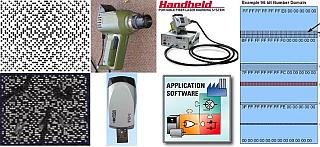 In 2007, I was successful in attracting the interest of a group of investors who saw commercial potential in this idea. We formed a company that has, after a number of name changes finally become NuEra ID Pty Ltd. Once the company was formed and funded, the R&D commenced in earnest. NuEra ID also attracted the interest of BAE Systems Australia and, as a consequence, NuEra ID commenced work developing a number of demonstrator and operational systems for them; one of which is still in use accounting for day to day support activities. Importantly, the demonstrator, concerning individual identification of items, proved that the NuEra ID method of uniquely identifying items requires approximately 60% less effort on the part of staff to barcode items than does the present Defence system called GS1, standing for Global System One. Also important was the fact that the NuEra ID system could be introduced using commonly available 2D barcode technology such as DataMatrix and commercially available barcode readers such as those made by Intermec. It took two years, and a lot of lost sleep, but from this research evolved a complete suite of technology consisting of:
Special Projects - a means of making an impact where it counts. In 2007, whilst on continuous full time military service, I convinced the Land Commander, MAJGEN Mark Kelly, to let me form a cell with aim of pursuing certain projects and demonstrating the potency of Open Source Software and related technologies. Within Defence there is a strong and genuine desire on the part of the very senior leadership to save money whilst not in any way compromising Defence capabilities. Indeed, this wish extends to improving capability whilst making significant economies. Open Source Software combined with other innovations, has the ability to make a substantial contribution. Army is the most significant Service in the Australian Department of Defence at the moment and Defence is the largest Department in the Australian Government. Being so, it should be leading rather than following when it comes to innovation. If there were to be a significant change in direction with Defence Information and Computing Technology, this would flow into all other Government Departments. All Government departments at all levels in Government within Australia spend tens of millions, if not hundreds of millions of dollars on closed source software. The NSW Department of Education has spent something in the order of $10 million per annum on Microsoft in past years. Imagine the cost across all Federal, State and Local Government organisations! Imagine if half this money were instead spent supporting Open Source Projects such as Ubuntu, LibreOffice, PostgreSQL, FirebirdSQL, Evolution or Thunderbird, Java, Python, GIMP, etc. It would be possible for Government, over time, to have developed software that ideally suits its needs. Not only would the savings to the Australian taxpayer be immense, the improvement in capability across the whole of Government (and, included in that, Defence) would be profound also. This money would, in most instances, be spent locally in Australia's universities and so it would produce for Australia a strong, vibrant industrial base in Computing Science; a significant strategic asset. Not only would Australia benefit but so would our Regional neighbours and this is definitely in Australia's Strategic Defence Interests. |
|
The Middle East-an object example of what is possible with Open Source Software. 
"Helping others to have a future" Pte Lauren Meade with 2 Afghan girls From time to time, debates in Parliament arise about whether or not Australia should be in Afghanistan. As a consequence of my experience in the Middle East and under-developed countries generally, I passionately believe we should be there trying to help. What we are seeing in Afghanistan, Somalia, Sudan, and all of the other failing nation-states in this world, is an absence of opportunities many in the West take for granted. These initiatives, that all the people involved with OSS are working on, could make a significant difference. Those that say conflicts such as Afghanistan are unwinnable are unimaginative, ignorant and wrong or following a sinister agenda. Winning does not necessarily resolve down to beating people into submission. It could and should mean "our views and our values prevailing whilst respecting the culture and beliefs of others". It's not going to be easy. It won't be quick but it is the right thing to do. What I have just related to you is a constructive intiative that could make a significant contribution, not only in war-torn countries but throughout the developing world. As the tag-line (above) in NVTech's banner says, if we don't help others have a future, we will not have one ourselves. |
|
How to "Spread the Word" - Communications, an Essential Enabler 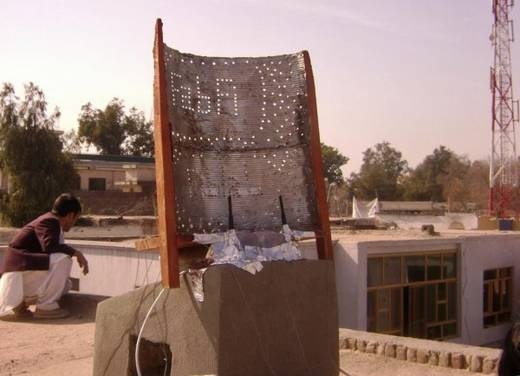
Afghanistan - Building an Internet from Scraps 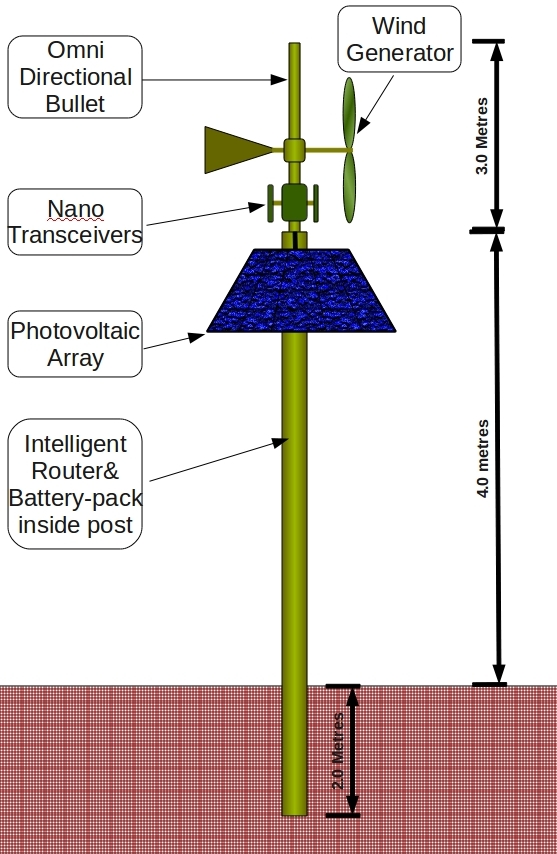
Self-Sustaining Communications Pole The pole depicted opposite costs less than $1,000 (Australian) at the time of writing. It takes a team of three people with a mechanical augur borer around 15 minutes to install. Importantly, it draws its power from the sun and from a wind-turbine to charge Lithium Ion batteries housed in the pole. If available, this could be supplemented by conventional electrical reticulation to provide a higher level of reliability. Also housed in the pole is a low cost router, running the Linux operating system and connected to a 1 Terabyte 2.5" hard drive. This is sufficient for the pole to provide "store and forward", proxy, web and email server services if desired. The range of these poles is somewhere between 300 and 700 metres. Placed around a kilometre apart, they provide a low-cost network that would enable a bandwidth of around 300 Megabits per second, full-duplex. This is enough to sustain tens of thousands of VoIP telephone calls or quite a number of high definition video streams. It would be possible for this network to be safely shared between Government authorities and the local civilian population. It is possible for each pole to report its condition every second if necessary. It would also be possible to keep poles under constant surveillance through a number of means such that if a pole is interfered with, immediate action can be taken. In a similar vein, for around $20 (Australian) it is possible to obtain flexible photovoltaic mats that are capable of charging a mobile device such as a smart-phone or a tablet. These can be used by people to access the network, make phone calls and utilise the Internet. Every year around 200 million perfectly serviceable computers are scrapped because they can't run the latest version of Windows but they will run a Linux distribution, such as Ubuntu, and Linux is free. |
|
Concluding If you have read to here you have done well. I'm sorry I couldn't have made this shorter. Wrapping up:
With best wishes Kevin Loughrey (David Attenborough has also completed a documentary, "Death of the Oceans?", revealing the the extreme damage humans have wrought on this planet's oceans and how this, if left unchecked, could precipitate an entire collapse of the food chain upon which humans depend.) |